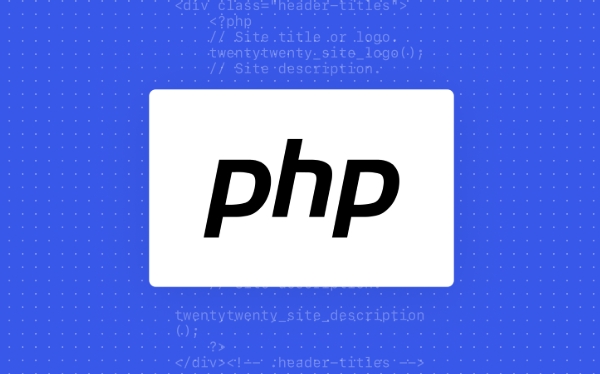掌握复杂字符串断言的lookaheads和lookbehinds
正向先行断言(?=...)、负向先行断言(?!...)、正向后行断言(?

Lookaheads and lookbehinds—also known as lookaround assertions—are powerful tools in regular expressions that allow you to match patterns based on what comes before or after a position in a string, without consuming characters. They’re essential when you need to enforce complex string conditions while keeping your matches precise. Here's how to master them.

What Are Lookaheads and Lookbehinds?
At their core, lookaheads and lookbehinds are zero-width assertions. That means they check for a pattern but don’t include the matched text in the result. They only assert whether a condition is true at a certain position.
There are four main types:

-
Positive lookahead:
(?=...)— Ensures what follows matches the pattern. -
Negative lookahead:
(?!...)— Ensures what follows does not match the pattern. -
Positive lookbehind:
(? — Ensures what precedes matches the pattern. -
Negative lookbehind:
(? — Ensures what precedes does <em>not</em> match the pattern.
These are especially useful when you want to extract or validate text based on context.
Using Positive and Negative Lookaheads
Lookaheads are the most commonly used lookarounds. They let you say, “match X only if it’s followed by Y.”

For example, suppose you want to find all words that are immediately followed by a comma, but you only want the word—not the comma.
\w (?=,)
This matches hello in hello, world, because the lookahead (?=,) asserts that a comma comes right after.
Now, for password validation: you might want to ensure a password contains at least one digit, one special character, and is at least 8 characters long. You can use multiple lookaheads anchored to the start:
^(?=.*\d)(?=.*[!@#$%^&*])(?=.*[a-z])(?=.*[A-Z]).{8,}$Breaking it down:
^— Start of string(?=.*\d)— At least one digit(?=.*[!@#$%^&*])— At least one special character(?=.*[a-z])— At least one lowercase letter(?=.*[A-Z])— At least one uppercase letter.{8,}— At least 8 characters$— End of string
Each lookahead starts from the beginning (^) and scans ahead to verify the condition. None of them consume characters, so the final .{8,} does the actual matching.
Working with Lookbehinds
Lookbehinds check what comes before the current position. They’re trickier because not all regex engines support variable-length lookbehinds, but modern ones (like in JavaScript, Python with regex module, or .NET) do allow limited variable-length patterns.
Suppose you want to extract a price that comes after a dollar sign:
(?<=\$)\d \.\d{2}This matches 19.99 in $19.99, because the lookbehind (?<=\$) ensures the number is preceded by a $.
Now, say you want to find numbers that are not preceded by a minus sign (i.e., positive numbers not explicitly marked):
(?<!-)\b\d \b
This avoids matching -42, but will match 42 in profit: 42.
Note: \b is a word boundary, ensuring we don’t match part of a larger number or identifier.
Combining Lookarounds for Precision
You can stack multiple lookarounds to create very specific conditions.
For example, extract a username from a log line like User 'alice' logged in, but only if it’s not an admin:
(?<=User ')(?!admin')[a-zA-Z] (?=' logged in)
This uses:
- Positive lookbehind to ensure the match starts after
User ' - Negative lookahead to exclude
admin - Positive lookahead to ensure the user is followed by
' logged in
So it matches alice but skips admin.
Another real-world use: finding email addresses that are not from a certain domain.
\b[a-zA-Z0-9._% -] @(?!(gmail\.com|yahoo\.com))[a-zA-Z0-9.-] \.[a-zA-Z]{2,}\bThis uses a negative lookahead to exclude Gmail and Yahoo addresses.
Common Pitfalls and Tips
- Order matters in lookaheads: When using multiple lookaheads at the start, they all start from the same position. So their order usually doesn’t affect logic, but can impact performance.
-
Lookbehinds must be fixed-width in some engines: In older JavaScript or Python’s
remodule, lookbehinds must have a fixed length. For example,(? is okay (both branches fixed), but <code>(? is not allowed. -
Use non-capturing groups inside lookarounds: Since you’re not capturing, group logic with
(?:...)to avoid unnecessary capture overhead. - Test edge cases: Lookarounds can be subtle. Always test with inputs like empty strings, boundaries, and overlapping patterns.
Mastering lookaheads and lookbehinds gives you surgical control over pattern matching. They’re not always necessary, but when you need to assert context without consuming text, they’re indispensable. Start with simple cases, validate your assumptions, and gradually build up to complex validations. With practice, they become second nature.
以上是掌握复杂字符串断言的lookaheads和lookbehinds的详细内容。更多信息请关注PHP中文网其他相关文章!

热AI工具

Undress AI Tool
免费脱衣服图片

Undresser.AI Undress
人工智能驱动的应用程序,用于创建逼真的裸体照片

AI Clothes Remover
用于从照片中去除衣服的在线人工智能工具。

Clothoff.io
AI脱衣机

Video Face Swap
使用我们完全免费的人工智能换脸工具轻松在任何视频中换脸!

热门文章

热工具

记事本++7.3.1
好用且免费的代码编辑器

SublimeText3汉化版
中文版,非常好用

禅工作室 13.0.1
功能强大的PHP集成开发环境

Dreamweaver CS6
视觉化网页开发工具

SublimeText3 Mac版
神级代码编辑软件(SublimeText3)
 超越数字捕获:在' preg_match”和`preg_replace'利用命名组”
Aug 04, 2025 pm 03:44 PM
超越数字捕获:在' preg_match”和`preg_replace'利用命名组”
Aug 04, 2025 pm 03:44 PM
名为CaptureGroupsInphppRovideAclearandMainabainableWaytoTallableDtextedTextByAssigningMeaningMeaningFufulNamesInsteadoFrelyingOnnumericIndices.1.use(?staters)或('name'Patter)或('name'Pattern)
 `u`修饰符释放:深入介绍PHP中的Unicode-ware Regex
Aug 03, 2025 am 06:39 AM
`u`修饰符释放:深入介绍PHP中的Unicode-ware Regex
Aug 03, 2025 am 06:39 AM
TheumodifierinPHPregexisessentialforproperUTF-8andUnicodesupport.1.ItensuresthepatternandinputstringaretreatedasUTF-8,preventingmisinterpretationofmulti-bytecharacters.2.Withoutu,characterslikeéoremojismaycausemismatchesorfailuresbecausetheengineread
 驯服野兽:在PCRE中减轻灾难性的回溯
Aug 03, 2025 am 07:17 AM
驯服野兽:在PCRE中减轻灾难性的回溯
Aug 03, 2025 am 07:17 AM
灾难性背带TrackingoccurswhennestedgreedyquantifierscauseexponentialbacktrackingonfailodMatches,asin^(a)$针对“ aaaax” .2.useatomicGroups(useatomicGroups(?>(?>((...))orpossessessiveQuantifiers(e.g.,e)topreventections.topreventections.3
 高级模式控制:探索`x`',`s`和'j`修饰符
Aug 04, 2025 am 10:54 AM
高级模式控制:探索`x`',`s`和'j`修饰符
Aug 04, 2025 am 10:54 AM
thex,s,s and jmodifiersInperlenHancereGexFlexibility:1)thexmodifierallowswhitespaceandcommentsforreadablepatterns,nessmodifiermakesthedototmatternewline,nesmodifiermakeStHedotMatternewLine,nimeforforcomplexexpressions;
 何时使用`preg_replace`与`preg_replace_callback_array`用于复杂替换
Aug 08, 2025 pm 06:10 PM
何时使用`preg_replace`与`preg_replace_callback_array`用于复杂替换
Aug 08, 2025 pm 06:10 PM
usepreg_replaceforsimplepatternswapswithstaticreplacementsorbackreferences.2.usepreg_replace_callback_callback_arrayformultpatternsrequiringcustomlogicviacallbacks,尤其是whenreplacementsdepententent,尤其
 使用PHP的`preg_match_all`制作强大的日志文件解析器
Aug 03, 2025 am 09:20 AM
使用PHP的`preg_match_all`制作强大的日志文件解析器
Aug 03, 2025 am 09:20 AM
使用preg_match_all函数配合正则表达式可高效解析PHP日志文件,1.首先分析日志格式如Apache的CLF;2.构建含命名捕获组的正则模式提取IP、方法、路径等字段;3.使用preg_match_all配合PREG_SET_ORDER标志批量解析多行日志;4.处理边缘情况如缺失字段或跨行日志;5.对提取数据进行验证与类型转换,最终将非结构化日志转化为结构化数组数据以供进一步处理。
 从验证到转换:`preg_filter'指南
Aug 08, 2025 pm 06:37 PM
从验证到转换:`preg_filter'指南
Aug 08, 2025 pm 06:37 PM
preg_filter仅在匹配时返回替换结果,否则返回null,适合用于需同时验证和转换的场景;1.它与preg_replace的主要区别是不匹配时返回null而非原字符串;2.适用于只保留并转换符合模式的数据;3.处理数组时自动过滤不匹配元素但保留键名,可用array_values重新索引;4.支持反向引用且性能适中,适合表单处理、URL重写等场景;5.当需要保留所有输入时应使用preg_replace,而在验证加转换的场景下preg_filter更高效简洁。








